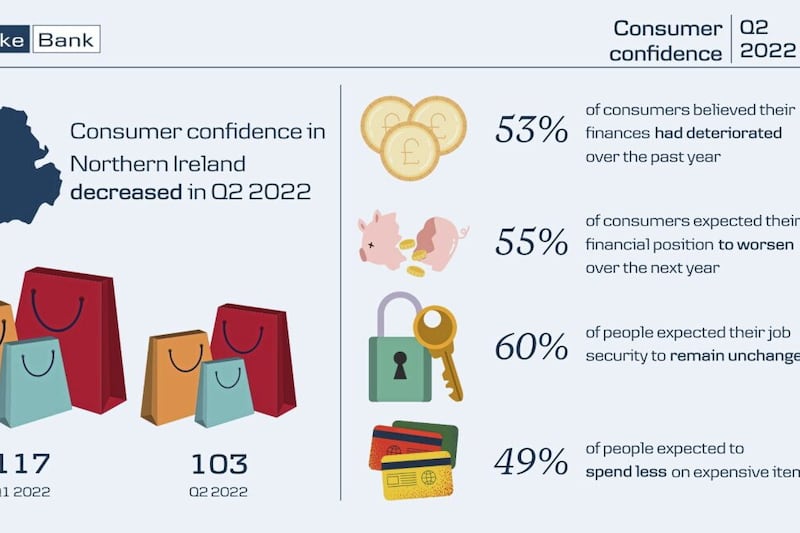THE Northern Ireland economy is facing a long standing challenge of low productivity.
Over the last 20 years, local productivity levels – or the level of output produced during an hour of work – have averaged close to 20 per cent below those in the UK.
The impact of this cannot be underestimated as productivity is a key driver of economic growth, wage increases and living standards.
Nobel prize-winning economist Paul Krugman emphasised why stagnant productivity growth is a major economic challenge.
He said: “Productivity isn’t everything, but in the long run it is almost everything. A country’s ability to improve its standard of living over time depends almost entirely on its ability to raise its output per worker.”
In typical economist fashion, I have turned to the data in an attempt to shed some light on this problem and have focused on the productivity performance of the different sectors within the Northern Ireland economy to try to better understand what has been driving our poor productivity performance.
Here are three findings which seemed significant to me:
ONE - Like the wider UK economy, Northern Ireland has endured a lost decade on the productivity front. In the years before the financial crisis, output per hour in Northern Ireland grew on average by 2.1 per cent each year.
But from 2008-2016, productivity growth averaged just 0.4 per cent. If output per hour had grown broadly in line with its pre-crisis trend since 2008, productivity levels in Northern Ireland in 2016 would have been around 15 per cent higher than they actually were.
TWO - In both high and low productivity sectors, Northern Ireland’s output per hour lags behind the other UK regions.
Local productivity levels in 2016 were highest in the real estate, financial services, public administration and manufacturing sectors. But real estate numbers are very high due to how the national accounts data is compiled, so it is better to focus on the other sectors mentioned.
While it is positive to see sectors like financial services and manufacturing, which can be considered high productivity sectors, near the top of the list, we still ranked in the bottom half for the level of productivity in these industries when compared with the other regions of the UK.
Another sector which can be considered a relatively high productivity industry is information and communication. But Northern Ireland had the lowest output per hour of all the UK regions in this sector in 2016.
The sectors with the lowest productivity levels in the local economy were administration and support, hotels and catering and arts, entertainment and recreational activities. While these sectors are normally considered to be relatively low productivity sectors, the north again sat well behind most of the other UK regions when it came to output per hour in each of these industries in 2016.
THREE - In productivity growth terms, there’s room for improvement across all sectors.
Productivity growth across the sectors has been quite volatile in recent years, so I have looked at the average annual rate of real output per hour growth to estimate which sectors experienced the strongest and weakest productivity growth performance between 2008 and 2016.
Given that a substantial number of people in Northern Ireland work in the wholesale and retail trade and the health sectors, it’s encouraging to see productivity increases in those areas. The average rate of growth in real output per hour was 2.8 per cent for wholesale and retail trade and 1.6 per cent for health.
One disappointment is the relatively weak performance of sectors such as information and communication (0.3 per cent), finance and insurance (-0.2 per cent) and professional, scientific and technical services (-1.3 per cent).
Given that only the wholesale and retail trade sector experienced average productivity growth of above 2 per cent and no industries witnessed growth above 3 per cent, there is undoubtedly room for improvement across the board.
Unfortunately, there is no silver bullet solution to improving a country’s productivity performance. Tackling the issue requires a multi-pronged policy response which needs to include investing in skills and infrastructure, encouraging businesses to spend more on research and development activities and companies increasing their activity in global markets.
Given the extent of Northern Ireland’s productivity problem, boosting performance in this area needs to be a priority.
:: Conor Lambe is Danske Bank economist in Northern Ireland. Follow him on @ConorLambe
:: Next week: Brendan Mulgrew








